Refer All Communications to the Nearest
Ingersoll--Rand Office or Distributor.
Ingersoll--Rand Company 2001
PrintedinU.S.A.
04576047
Form P7370
Edition 4
August, 2001
INSTRUCTIONS FOR
MODEL 311A HEAVY DUTY
DUAL--ACTION ANGLE SANDERS
Model 311A Dual--Action Air Sander is designed for feather edging, metal preparation and finishing
body filler in automotive applications.
Ingersoll --Rand is not responsible for customer modification of tools for applications on which
Ingersoll --Rand was not consulted.
IMPORTANT SAFETY INFORMATION ENCLOSED.
READ THIS MANUAL BEFORE OPERATING TOOL.
IT IS THE RESPONSIBILITY OF THE EMPLOYER TO PLACE THE INFORMATION
IN THIS MANUAL INTO THE HANDS OF THE OPERATOR.
FAILURE TO OBSERVE THE FOLLOWING WARNINGS COULD RESULT IN INJURY.
PLACING TOOL IN SERVICE
• Always operate, inspect and maintain this tool in
accordance with al l regulations (local, state,
federal and country), that may apply to hand
held/hand operated pneumatic tools.
• For safety, top performance, and maximum
durability of parts, operate this tool at 90 psig
(6.2 bar/620 kPa) maximum air pressure at the
inlet with 3/8” (10 mm) inside diameter air supply
hose.
• Always turn off the air supply and disconnect the
air supply hose before installing, removing or
adjusting any acc essory on this tool, or before
performing any maintenance on this tool.
• Do not use damaged, frayed or deteriorated air
hoses and fittings.
• Be sure all hoses and fittings are the correct size
and are tightly secured. See Dwg. TPD905--1 for a
typical piping arrangement.
• Always use clean, dry air at 90 psig maximum air
pressure. Dust, corrosive fumes and/or excessive
moisture can ruin the motor of an air tool .
• Do not lubricate tools with flammable or volatile
liquids such as kerosene, diesel or jet fuel.
• Do not remove any labels. Replace any damaged
label.
USING THE TOOL
• Always wear eye protection when operating or
performing maintenance on this tool.
• Always wear hearing protection when operating
this tool.
• Keep hands, loose clothing and long hair away
from rotating end of tool.
• Anticipate and be alert for sudden changes in
motion during start up and operation of any power
tool.
• Keep body stance balanced and firm. Do not
overreach when operating this tool. High reaction
torques can occur at or below the recommended
air pressure.
• Tool shaft may continue to rotate briefly after
throttle is released.
• Check for excessive speed and vibration before
operating.
• Air powered tools can vibrate in use. Vibration,
repetitive motions or uncomfortable positions may
be harmful to your hands and arms. Stop using
any tool if discomfort, tingling feeling or pain
occurs. Seek medical advice before resuming use.
• Use accessories recommended by Ingersoll--Rand.
• These Sanders will operate at the free speed
specified on the nameplate if the air supply line
furnishes 90 psig (6.2 bar/620 kPa) air pressure at
the tool. Operation at higher air pressure will
result in excessive speed.
• Use only a sanding pad, buffing wheel or polishing
bonnet with these tools. Do not use any grinding
wheel, bur or metal removing accessory with these
tools. Never use an accessory having a maximum
operating speed less than the free speed of the
Sander in which it is being used.
• When using a pad having a shank, insert the shank
to full depth in the collet. When using a pad on a
threaded arbor, make certain the flange nut is
tightened sec urely. Check the tightness of the
collet nut or flange nut before operating a Sander
to make certain it will not loosen during operation.
• This tool is not designed for working in explosive
atmospheres.
• This tool is not insulated against elect ric shock.
• Prevent exposure and breathing of harmful dust
and particles created by power tool use:
Some dust created by power sanding, sawing,
grinding, drilling and other construction
activities contains chemicals known to cause
cancer, birth defects or other reproductive
harm. Some examples of these chemicals are:
-- lead from lead based paints,
-- crystalline silica from bricks and cement
and other masonry products, and
-- arsenic and chromium from chemically
treated lumber.
Your risk from these exposures varies,
depending on how often you do this type of
work. To reduce your exposure to these
chemicals: work in a well ventilated area, and
work with approved safety equipment, such as
those dust masks that are specially designed to
filter out microscopic particles.
The use of other than genuine Ingersoll--Rand replacement parts may result in safety hazards, decreased tool
performance, and increased maintenance, and may invalidate all warr anties.
Repairs should be made only by authorized trained personnel. Consult your nearest Ingersoll--Rand Authorized
Servicenter.
GB

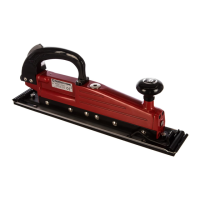
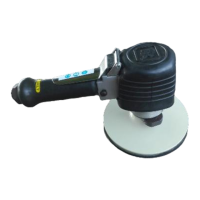

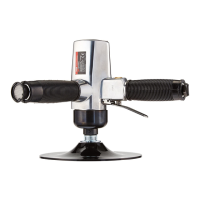
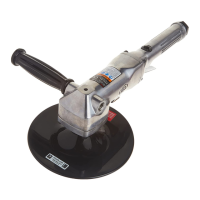
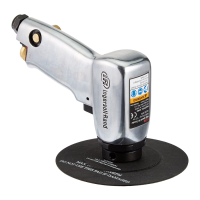
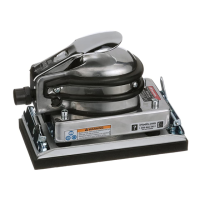

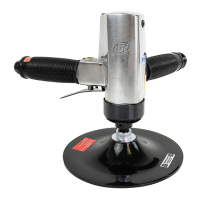
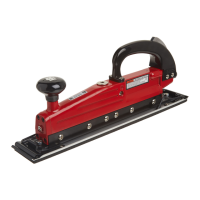
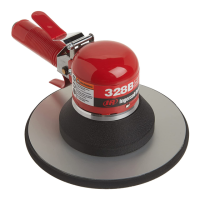

